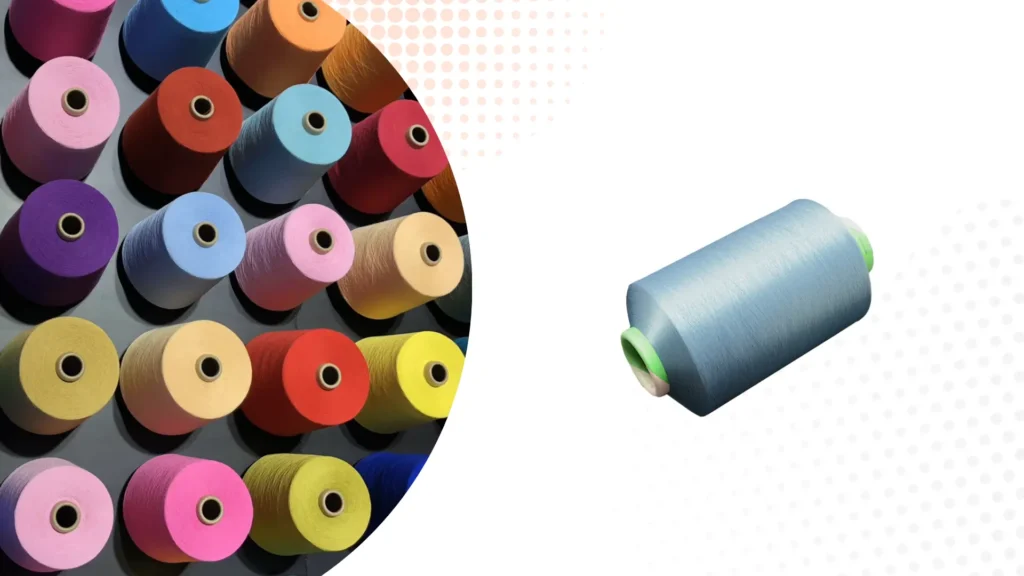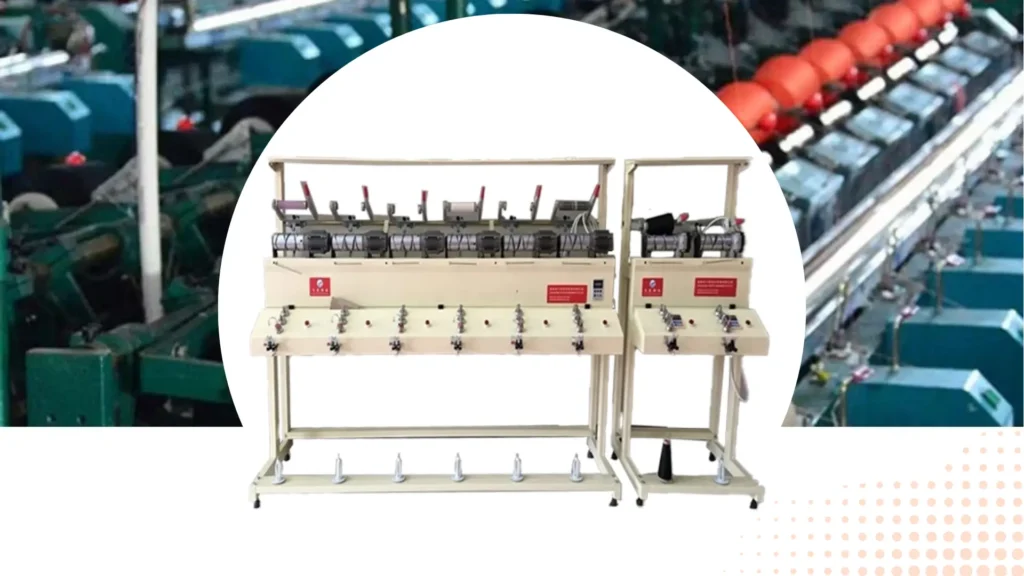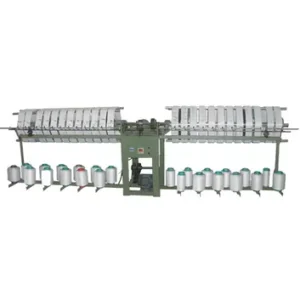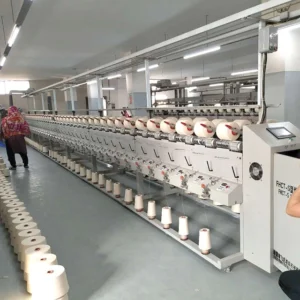Textile manufacturing is one of the most energy-intensive industries, accounting for nearly 10% of global industrial energy use.
With rising energy costs and increasing environmental regulations, implementing energy-efficient practices has become essential for maintaining profitability and sustainability.
This guide breaks down practical, actionable strategies to reduce energy consumption in textile production without compromising quality or output.
Why Should Textile Factories Prioritize Energy Efficiency?
Rising Energy Costs
Energy costs account for a significant portion of total production expenses, typically ranging from 20% to 40%.
This substantial financial burden highlights the importance of energy efficiency in manufacturing processes.
By implementing energy-saving technologies and practices, companies can drastically reduce their operational costs.
As energy prices continue to rise, manufacturers who prioritize efficiency will not only alleviate financial pressure but also enhance their overall competitiveness in the market.
Environmental Regulations
In response to growing concerns about climate change and environmental sustainability, governments across the globe are enforcing more stringent energy consumption standards for manufacturers.
These regulations often require businesses to adopt cleaner technologies and reduce their carbon footprints.
Compliance with these laws is not just a legal obligation; it also presents an opportunity for manufacturers to innovate and improve their operational efficiencies.
Competitive Advantage
In today’s market, energy-efficient factories are becoming increasingly attractive to both eco-conscious brands and consumers who prioritize sustainability.
Companies that invest in energy-efficient practices can differentiate themselves from competitors by showcasing their commitment to environmental responsibility.
This not only enhances brand loyalty but also opens up new market opportunities, as many businesses are seeking partnerships with suppliers that align with their sustainability goals.
How Can Lighting Upgrades Reduce Energy Use?
LED Lighting Conversions
Switching to LED lighting can result in a remarkable reduction in energy consumption, using 50% to 70% less energy compared to traditional incandescent or fluorescent lighting.
This substantial energy savings not only lowers electricity bills but also contributes to a reduced carbon footprint, making it an environmentally friendly choice.
This longevity means fewer replacements, reducing maintenance costs and waste.
Motion Sensor Installation
Installing motion sensors in low-traffic areas is an effective way to enhance energy efficiency by ensuring that lights are only activated when necessary.
These automated systems detect movement and automatically turn lights on and off, minimizing energy waste in spaces that are rarely occupied, such as storage rooms, hallways, or restrooms.
This not only saves energy but also extends the lifespan of lighting fixtures, as they are not left on unnecessarily.
Daylight Optimization
Maximizing the use of natural light through strategic window placement and reflective surfaces can greatly enhance energy efficiency in a building.
By designing spaces to take advantage of daylight, businesses can reduce their reliance on artificial lighting during the day.
Well-placed windows allow sunlight to flood in, while reflective surfaces—such as light-colored walls and ceilings—help to distribute this natural light throughout the space.
Also Read:
- Strategies for Tracking and Minimizing Energy Use in Textile Manufacturing Facilities
- Ways to Achieve Carbon Neutrality in the Textile Industry
What Role Does Equipment Modernization Play?
High-Efficiency Motors
Upgrading to high-efficiency motors, such as those classified as IE3 or IE4, can lead to significant reductions in energy consumption, typically ranging from 10% to 15%.These motors are designed with advanced technology that minimizes energy losses during operation, making them more efficient than standard motors.
By investing in high-efficiency motors, businesses can not only lower their electricity bills but also contribute to reducing overall carbon emissions.
Variable Frequency Drives
VFDs offer a sophisticated solution for optimizing motor performance by adjusting the motor speed to align with actual demand.
This capability allows for precise control over the energy used, significantly cutting energy waste, especially in applications where load conditions vary frequently.
This not only leads to lower energy costs but also extends the lifespan of the equipment by reducing wear and tear.
Heat Recovery Systems
Heat recovery systems are an innovative approach to enhancing energy efficiency by capturing waste heat generated from processes such as dryers and boilers.
Instead of allowing this heat to escape, these systems can repurpose it to preheat water or air, effectively recycling energy that would otherwise be lost.
By integrating heat recovery systems, businesses can make significant strides towards sustainability while also realizing substantial cost savings on energy bills.
How Can Process Optimization Save Energy?
Batch Processing Consolidation
Consolidating batch processing by running full loads is an effective strategy to minimize energy waste associated with multiple small batches.
When production is divided into smaller, less efficient batches, the energy consumed during heating, cooling, and processing can add up significantly, leading to unnecessary costs.
By focusing on full loads, businesses can optimize energy usage, streamline operations, and improve overall productivity.
Optimal Machine Scheduling
Aligning high-energy processes with off-peak electricity rates is a smart approach to managing energy costs effectively.
Many utility companies offer lower rates during off-peak hours when demand for electricity is lower.
By scheduling energy-intensive operations during these times, businesses can take advantage of reduced rates, leading to significant savings on energy bills.
Preventive Maintenance
Implementing a preventive maintenance program is crucial for ensuring that equipment operates at peak efficiency and uses less energy.
Regular maintenance checks, such as cleaning, lubrication, and timely repairs, help identify potential issues before they escalate into costly breakdowns.
Well-maintained machinery functions more smoothly and requires less energy to operate, translating into lower operational costs.
And More:
- How Can Textile Factories Reduce Their Carbon Footprint?
- The Impact of Automation on Reducing Carbon Emissions in Textile Factories
What Are the Benefits of Renewable Energy Integration?
Solar Panel Installations
Installing solar panels on-site can significantly offset a factory’s energy needs, potentially covering 20% to 40% of its electricity consumption.
By harnessing solar energy, manufacturers can reduce their reliance on traditional energy sources, leading to lower utility bills and decreased greenhouse gas emissions.
Additionally, on-site solar installations can provide greater energy independence and stability, protecting businesses from fluctuating energy prices.
Biomass Energy Systems
Biomass energy systems offer an innovative way to convert waste materials into usable energy, which can be particularly beneficial for manufacturing processes.
Biomass systems can be tailored to fit specific production needs, making them versatile solutions for various industries.
As businesses seek to enhance their sustainability initiatives, integrating biomass energy systems can contribute to a circular economy while improving energy efficiency.
Power Purchase Agreements (PPAs)
PPAs provide a strategic option for businesses to engage with renewable energy providers without the burden of upfront capital costs.
Through a PPA, companies can secure a long-term contract to purchase electricity generated from renewable sources, such as wind or solar, at predetermined rates.
This arrangement allows businesses to benefit from stable energy pricing, hedge against future energy price increases, and support the growth of renewable energy without the need to invest heavily in infrastructure.
How Can Employee Engagement Drive Efficiency?
Energy Awareness Training
Implementing energy awareness training programs is essential for educating staff about the importance of energy conservation and the impact of their daily actions on overall energy efficiency.
This training not only empowers employees to take responsibility for their energy consumption but also encourages them to think critically about how their roles contribute to the company’s energy goals.
Ultimately, raising energy awareness among staff can lead to significant reductions in energy waste and foster a collective commitment to sustainability.
Incentive Programs
Establishing incentive programs can effectively motivate employees to identify and implement energy-saving ideas within the organization.
Incentives can take various forms, such as bonuses, recognition programs, or even small prizes for successful initiatives.
This approach not only encourages participation but also fosters collaboration among employees as they work together to discover and execute energy-saving strategies.
Regular Energy Audits
Conducting regular energy audits is a proactive approach to involving employees in tracking and improving energy performance.
These audits provide a comprehensive assessment of energy usage across the organization, identifying areas where energy can be saved and efficiency can be improved.
By engaging employees in the auditing process, businesses can harness their insights and firsthand knowledge of operations to pinpoint inefficiencies and suggest practical solutions.
What Low-Cost Quick Wins Deliver Immediate Savings?
Compressed Air Leak Repairs
Repairing leaks in compressed air systems is a critical step in enhancing energy efficiency, with the potential to reduce energy consumption by 20% to 30%.
By conducting regular inspections and promptly fixing leaks, companies can not only lower their energy bills but also improve the overall performance of their compressed air systems.
Investing in leak detection technologies and maintenance practices can yield substantial savings and enhance operational efficiency.
Insulation Improvements
Enhancing insulation on pipes and boilers is essential for minimizing heat loss, which can lead to significant energy savings in industrial processes.
Proper insulation helps maintain the desired temperature of fluids within pipes and reduces the amount of energy required to heat or cool these systems.
Moreover, effective insulation contributes to a safer working environment by minimizing surface temperatures and reducing the risk of heat-related accidents.
Smart Thermostats
Implementing smart thermostats in HVAC systems can greatly optimize energy usage through automated temperature control.
These advanced devices learn the heating and cooling patterns of a building and adjust settings accordingly, ensuring that energy is used efficiently based on occupancy and time of day.
By integrating smart thermostats into building management systems, companies can achieve greater control over their energy consumption, leading to substantial cost savings.
How to Measure and Track Energy Performance?
Submetering Key Equipment
Submetering key equipment involves installing dedicated meters to monitor energy consumption at the machine level, allowing businesses to gain detailed insights into where energy is being used and where waste may be occurring.
This granular visibility enables targeted interventions, such as upgrading machinery, adjusting operational practices, or scheduling maintenance more effectively.
Ultimately, submetering not only helps in reducing energy costs but also promotes a culture of accountability and continuous improvement in energy management across the organization.
Energy Management Software
Energy management software provides organizations with powerful digital tools for real-time tracking and analytics of energy consumption.
These platforms collect data from various sources, including submeters and sensors, and present it in user-friendly dashboards that highlight trends, anomalies, and areas for improvement.
With real-time visibility into energy usage, businesses can make informed decisions quickly, adjusting operations to optimize efficiency and minimize waste.
Key Performance Indicators (KPIs)
Establishing KPIs is essential for measuring progress in energy efficiency initiatives. Metrics such as kilowatt-hours (kWh) per kilogram of fabric produced provide a clear benchmark for assessing energy performance relative to production output.
These metrics not only facilitate accountability among teams but also help in communicating successes and challenges in energy management.
Regularly reviewing KPIs allows businesses to stay focused on their energy efficiency goals, drive continuous improvement, and align their operations with broader sustainability objectives.
Conclusion
Implementing energy-efficient practices in textile factories isn’t just about reducing costs—it’s about future-proofing operations against rising energy prices and tightening regulations.
By combining equipment upgrades, process improvements, and employee engagement, manufacturers can achieve significant energy savings while maintaining production quality.
The journey toward energy efficiency starts with small, actionable steps that collectively make a major impact.
Ready to cut your factory’s energy costs? Our energy efficiency specialists can conduct an assessment and recommend tailored solutions—contact us today to get started.












